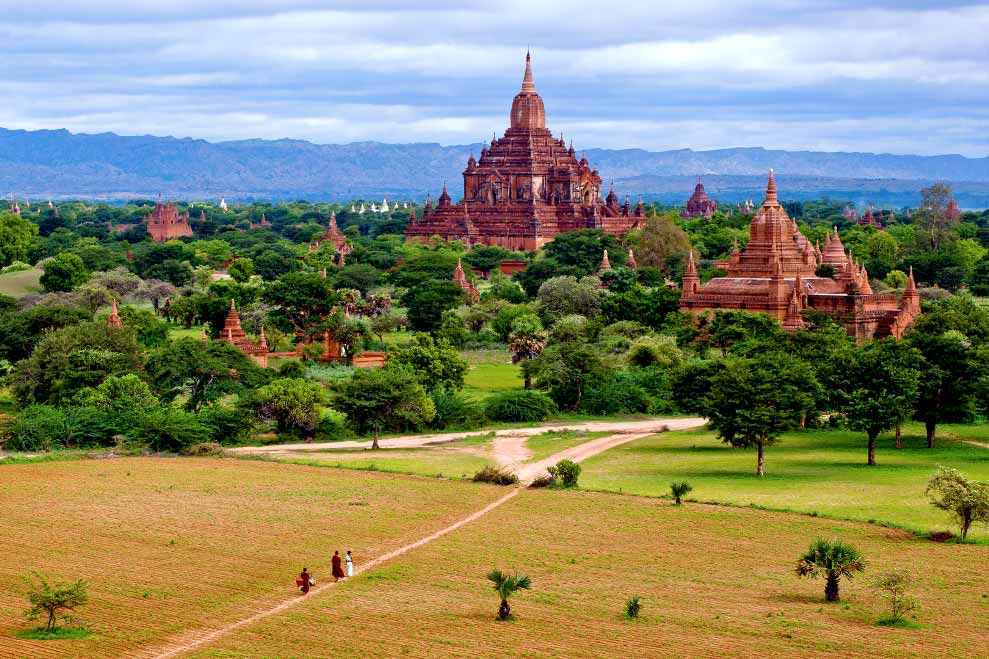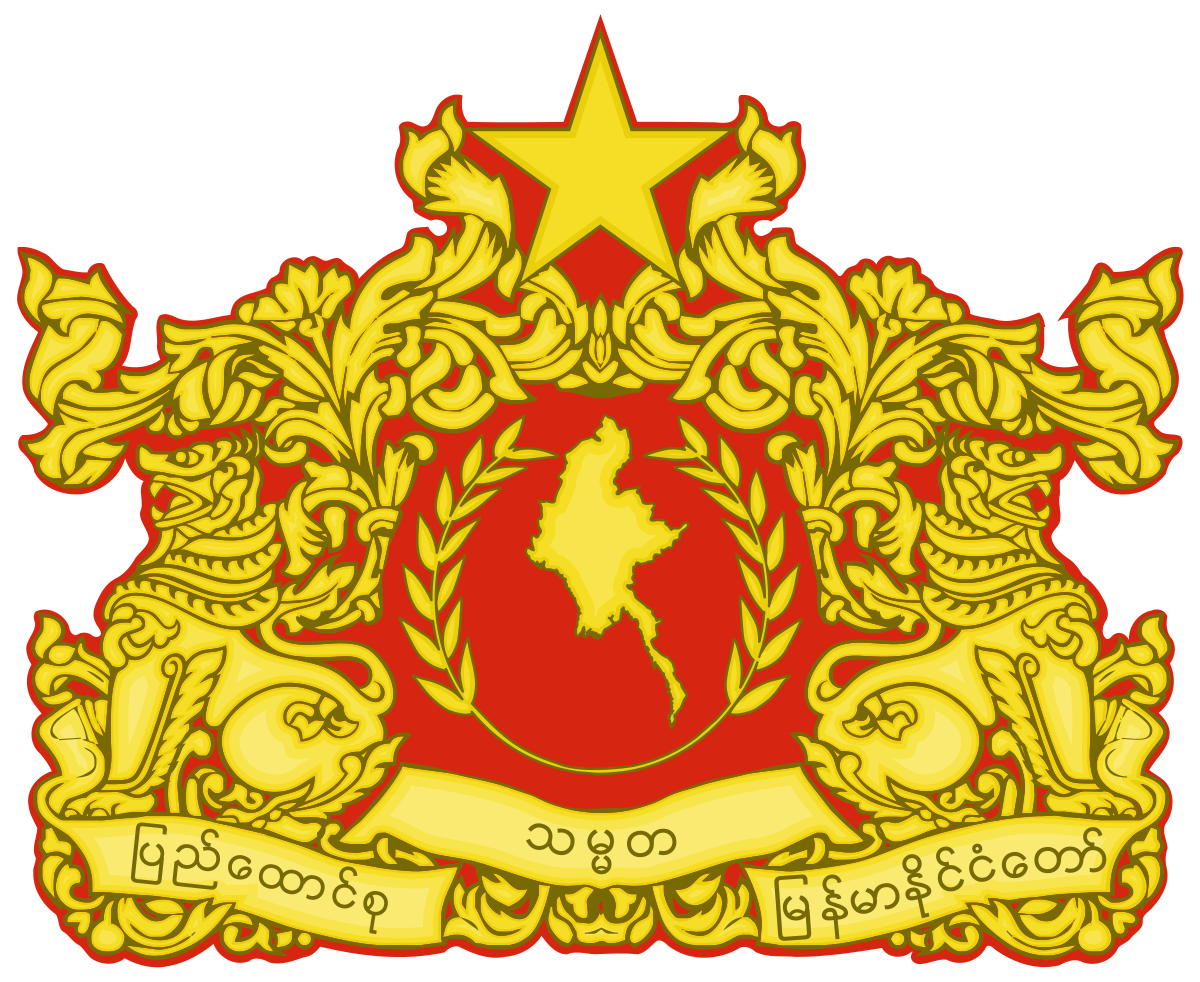Bagan - Bagan

Destination: Bagan in Mandalay Region
Destination Climate: Mild – no rainy season as in a dry zone
Region Borders: Sagaing Region, Magway Region & Shan State
Region Size: 37,024 sq km / 14,295 sq miles
Region Capital: Mandalay
Region Population: 6.1 million (2014)
Destination Lineage: Myanmar
Destination Languages: Myanmar/Burmese & English
Religions: Buddhism, Christianity, Islam & Hinduism
How To Get There: Bagan is a key tourist destinations in Mandalay Region with over 2,000 ancient pagodas and temples. You can visit Bagan all year round as there is no actual rainy season like in the lower parts of Myanmar. With more than 1,500 years of history, beautiful local art, such as lacquer ware, basket and cloth weaving, it is the most fascinating place for travellers. Many tourists arrive at Nyaung U airport but it is also possible to reach Bagan by road or on one of the river cruises.
TRADITIONS
Experience authenticity with handicrafts and festivities celebrated throughout the generations
Numerous traditions have been preserved in Bagan and its surrounding villages, including handicrafts such as beautiful lacquerware, basket weaving, sand art painting, woodcarving and bronze wares. If you cannot make it to a workshop to witness these items being made, be sure to browse some of the stalls around the pagodas for suitable souvenirs and keepsakes. There are also some truly delicious locally produced foodstuffs such as jaggery, toddy, tamarind flakes, plum jams and bean paste.
Enjoying the atmosphere of a pagoda festival in Bagan can be the best time to witness Buddhist rituals and experience the social gatherings of local people. The month long, sanctified festival for Ananda Temple usually falls in January, whereas the one for Manuha Pagoda is held in September or October. Another famous event in Bagan, Alo-Daw Pyae Pagoda Festival, occurs in December. In April the whole country enjoys the water festival, Thingyan, and in the dry zone Bagan is no exception.
BAGAN
HIGHLIGHTS
Experience a magical world, be transported back in time.
Pagodas
Steeped in history and one of the most remarkable sights in southeast Asia, Bagan has inspired visitors to come to Myanmar for a thousand years. Ancient chronicles say that there were once 4,446 pagodas and stupas covering its wide plains but today around 2,230 splendid examples remain, as recorded by UNESCO in 1988. Largely built from the 10th to the 14th century, they are found in the Bagan Archaeological Zone, which is defined as an area measuring 104 sq km (40 sq miles) located in the vast expanse of plains in Upper Myanmar on the bend of the mighty Ayeyarwady River.
River
Being located in the dry central zone of the country, in the region of Mandalay, means that Bagan is not subject to the monsoon season like many other parts of Myanmar. This imbues the river with even greater importance for the inhabitants of the area. While most visitors arrive in Bagan by air or by road, some take a leisurely (and often luxury) river cruise from Yangon or Mandalay to absorb the beauty and history of Bagan. For those who don’t, it is highly recommended to experience a memorable boat excursion in the early evening to capture glimpses of local riverine life and watch the sunset.
Environs
On a clear day Mount Popa is visible from the Ayeyarwady River, as far away as 60km. A 1-hour drive from Bagan, this extinct volcano is just one of a number of interesting places to visit in the vicinity of Bagan. Mount Popa is a popular site for pilgrimages and affords fabulous views of the area. Salay, an ancient capital, is 45 minutes by road from Mount Popa and is an important centre of Buddhism with many active monasteries. Also near Bagan, about 26km away, is Nga Tha York Village which is famous for its wooden sandals, earthenware pottery and soya bean paste.
PLAINS
Boundless blue skies, limitless lands and a history stretching back many centuries
When you behold the vast expanse of open lands studded with stupas, pagodas and temples of various eras and different colours against the mountain backdrop, it is hard not to be completely and utterly enchanted by this fairyland. Bagan is considered a key tourism highlight and gives you the opportunity to experience an authentic, rural life from a bygone age. Breathtakingly picturesque, Bagan was the capital of the Kingdom of Pagan from the 9th to the 13th century, and a visit to the museum offers deeper insight into its history.
It was the first kingdom to unify the area that is now known as Myanmar. The former, majestic power and spiritual draw, of what is now the archaeological zone, is obvious to the eye. Besides being the top attraction for foreign visitors to Myanmar, many of this magical, ancient city’s sacred monuments are still highly venerated by the local population, and attract numerous pilgrims and devotees from all over the country, particularly at festival times. Other stupsa, pagodas, arnd temples are in various states of repair, conservation and maintenance.
ENVIRONS
A myriad of authentic, diverse attractions are within easy reach
Central Myanmar is an intrguing place. Apart from the spectacular sights of ancient religious monuments in Bagan, there are many additional scenic and cultural attractions in and around the ancient city that can be done as day trips or even overnight stays, should you wish.
Avid golfers who like to do a round in unusual and historic places will delight in Bagan’s 18-hole course, set against an impressive backdrop of pagodas, plains and the river. To pack a little diversity in your Bagan trip you can always visit Mount Popa, an oasis in the arid region in central Myanmar, go to Salay, Nga Tha York or Zee Oo villages for local products and bubolic life.
MOUNT POPA
A 1,500m-high, extinct volcano just 60km southeast of Bagan, Mount Popa has great importance to those who believe in the 37 Nats, ancient Burmese animist spirits. Perched dramatically atop a huge rocky outcrop of its slopes there is also the sacred Popa Taungkalat Monastery. To reach the summit of this solitary mountain and fully enjoy the amazing views of this designated nature reserve and national park, you need to climb the 777 steps which are populated with monkeys.
SALAY TOWN
A colourful old religious centre about a 1.5-hr drive south of Bagan, Salay long ago developed its own unique style of Bagan-era architecture. While exploring you can learn more about this and about monastic life. Of the numerous ancient monasteries, a highlight to any trip to Salay is Yoke Sone Monastery which is a cultural heritage site located on the eastern bank of the Ayeyarwady River. It is worth visiting for its exceptional 18th century spectacular woodcarving works. Salay is also famous for its cultivation of plums which are sold all over Myanmar.
COTTAGE INDUSTRY VILLAGES
A number of villages close to Bagan continue to foster cottage industries through traditional practices. One such place is Zee O Village, famous locally for its enormous, 1,000-year old tamarind tree. Here you can see palm sugar production and local methods of making peanut and sesame seed oils. Witness cow rotating a mortar and pestle to extract the oils in a traditional manner. On the other hand, Nga Tha York Village is renowned for its wooden sandals, earthenware pottery and soya bean paste production.
ကိုးကားချက်။ ။ ဟိုတယ်နှင့်ခရီးသွားလာရေးဝန်ကြီးဌာန



